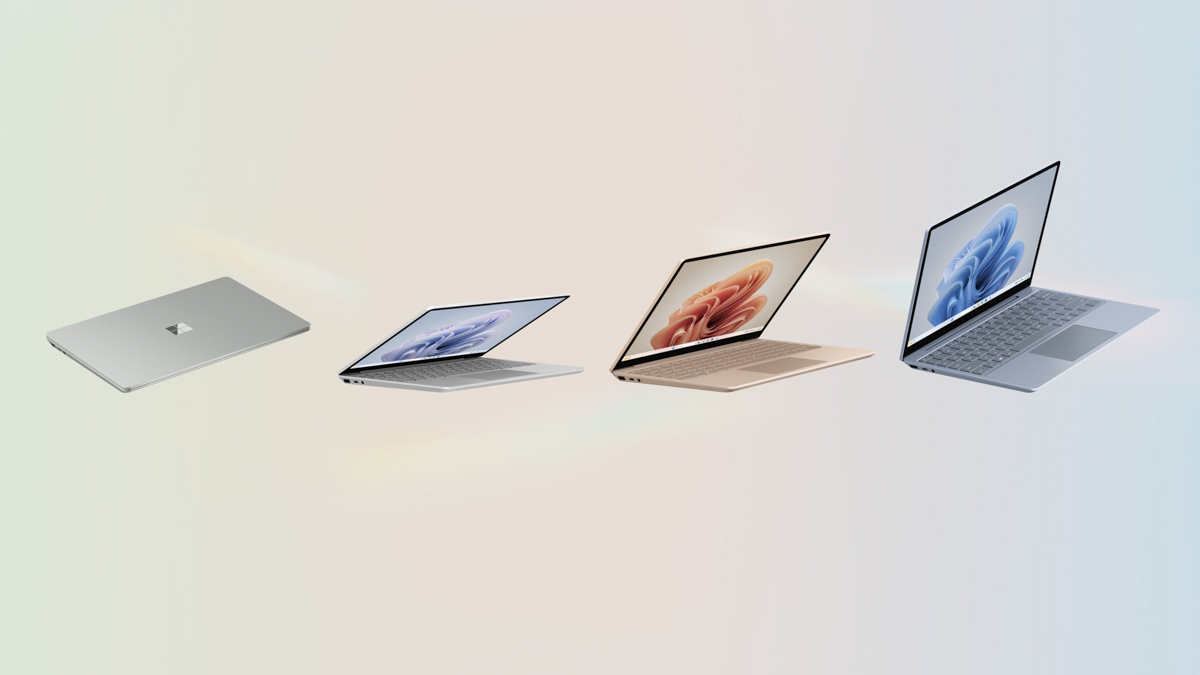In the heart of New York City, Microsoft is introducing updates for two of its most affordable and endearing Surface devices today. They’re unveiling internal enhancements for both the Surface Laptop Go and the Surface Go tablet. The external appearances of the Surface Laptop Go 3 and the Surface Go 4 remain unchanged from their predecessors, but beneath the surface, they’ve received substantial internal improvements that are bound to satisfy budget-conscious PC shoppers. However, there’s a catch: while the laptop will be accessible to the general public, the new Surface Go tablet will exclusively cater to Microsoft’s business clientele.
The Surface Laptop Go 3 now comes with a higher starting price tag of $800, marking a $200 increase compared to the starting price of the Laptop Go 2. Nevertheless, the $600 configuration of the Laptop Go 2 was almost impossible to recommend due to its meager 128GB SSD and notably inadequate 4GB of RAM. The new base configuration boasts a serviceable 8GB of RAM and a 256GB SSD, with the option to upgrade to 16GB of RAM for an additional $200. While these upgrade costs may appear steep and could push the Laptop Go out of the “budget laptop” category, they undeniably enhance its usability. Remarkably, the laptop’s price remains the same as the 8GB/256GB version of the Laptop Go 2.
The Surface Laptop Go 3 is currently available for pre-order in a selection of four vibrant colors and is scheduled to hit the market on October 3rd.

The Laptop Go 3 maintains its tradition of trailing one CPU generation behind the more advanced Surfaces (and the majority of PCs on the market). It opts for the 12th-generation Core i5-1235U processor, which features two P-cores and eight E-cores. In this instance, considering that many 13th-generation Core CPUs are essentially 12th-gen models with minor clock speed enhancements, there isn’t much to lose by sticking with an older processor. Moreover, the U-series 12th-gen chips we’ve assessed haven’t encountered the same battery life issues as their 12th-gen P-series counterparts.
The Laptop Go 3 retains its 12.4-inch touchscreen, boasting a satisfactory 1536×1024 resolution and a 3:2 aspect ratio. Its port selection remains limited, featuring only a single USB-C port, a USB-A port, a headphone jack, and a Surface Connect port. If you require HDMI or other external display options, you’ll need a dongle, although it’s a good fit for monitors with built-in USB-C connectivity. The device retains a basic 720p webcam devoid of Windows Hello capabilities, but it does come equipped with a fingerprint sensor embedded in the power button. Unfortunately, there is still no keyboard backlight.
For those fortunate enough to acquire the Surface Go 4, the design remains unaltered. It boasts a 10.5-inch 1920×1280 screen, a lone USB-C port, a headphone jack, a microSD card slot, and a Surface Connect port. The base RAM configuration has been increased from 4GB to 8GB, although 64GB and 128GB storage options remain available.
Under the hood, the tablet employs a quad-core Intel N200 processor. Ordinarily, opting for an N-series CPU might deter one from purchasing an affordable PC, as these chips are descendants of the old Intel Atom netbook processors and have typically delivered subpar performance. However, the N200 is constructed on the same architecture used by 12th- and 13th-generation CPUs for their E-cores, which are comparable in speed to older Skylake-based chips, such as Intel’s 6th-through-10th-generation processors. Consequently, the result is a chip that performs adequately for most everyday computing tasks, representing a notable improvement over the exclusively dual-core CPUs found in the Surface Go 3.

